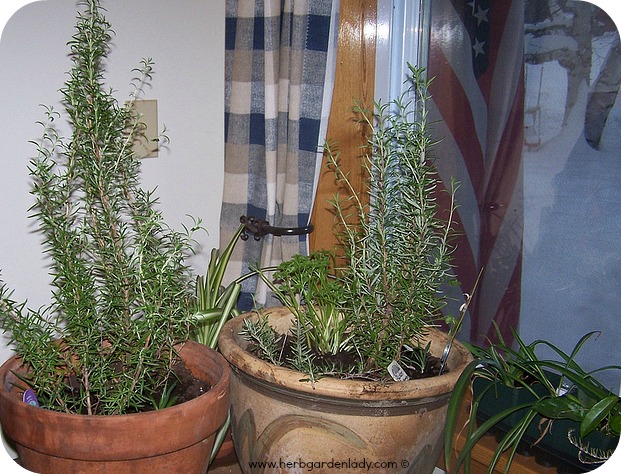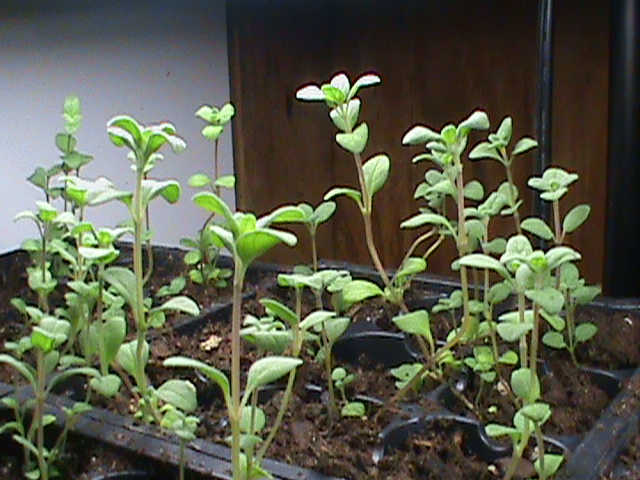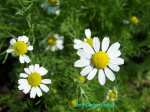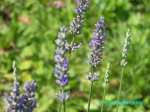Growing Herbs Indoors
Indoor Garden Indoor Herb Garden
Window Herb Garden Windowsill Herb Garden
Growing herbs indoors can be a challenge in the winter months, but with a few tricks up your sleeve, it can be done. Fragrance, aroma, beauty and fresh herbs help those winter blues stay away until spring can come back.
Here in Vermont (see photos on my Facebook photo page) the winters can seem long, so keeping some winter herbs in the home is perfect for winter gardening.
Herbs any other time of the year are usually planted outside to maximize their culinary or medicinal benefits they provide us. But we can trick Mother Nature with indoor grow lights, heating mats and light fertilizers in order to enjoy her bounty.
Here are some things to consider when growing herbs indoors…
• Sun loving herbs need at least 6 hours of sun light a day to thrive.
• Location is vital in order to utilize the best sunlight. Light reflective surfaces or a white wall help reflect light back to your sun loving herbs. A sunny windowsill is perfect.
• Just like indoor house plants…herbs need to be turned a few times each week to insure even sunlight and optimal growth.
Temperature
Keep in mind most herbs prefer to be warm between 60-70 degrees Fahrenheit. Keep their roots and leaves warm and you’ll be rewarded with tasty herbs. Yum!
Herbs grown indoors do not like droughts. A sudden drop in temperature causes them to stop growing – not a positive result.
A door opened and closed creates a perfect drought. Or a nice warm toasty fire pulls air from cracks in the home. Or else, an old non-insulted single glass windows create lower temperatures at night…creating stress for your warm loving herbs.
Some herbs, such as, Rosemary or Lavender do not mind colder temperatures. You actually start growing them in colder temperatures. So, there are a few herbs that aren’t too particular on temps.
Fresh air is important for growing herbs indoors too. Good circulation, but limit breezes if possible. It’s not the end all, but stunts growth.
Water Requirements
Water them daily some say…not so for herbs. Just like indoor houseplants during the winter months too much water is a bad thing.
Do not over water.
But, they’ll dry out.
No, water them sparingly. Why…
Herbs without the full force of Mother Nature outside surprisingly tend to grow slower. Their rate of absorption of water and nutrients is not as crucial as in the “growing season”.
Too much water reduces the air pockets for the root hairs to absorb nutrients and might create an environment for root rot or fungus. The best way to gauge moisture level is either through a simple water stick gauge or water meter for indoor potted plants.
Another gauge is sticking your finger in the soil. If it feels damp wait another day or two then test again.
If peat moss is used and it dries out, it creates a gap between the pot and soil. Take your plant and plunge the pot up to the rim into some warm water for about 15 minutes allowing the absorption of water into the peat. When water is poured into the herb garden pot the water goes between the pot and the soil. Not the result you want.
They love family too...
Herb plants like other plants close by.
The benefit of having your herb plants close together is atmospheric moisture. The moist environment plus an optional covering of sphagnum moss on the soil surface keeps the plants soil moist.
When growing herbs indoors during the hotter months spraying the plant with warm tepid water keeps moisture level in check.
Feeding Your Herb Plants
Spring and summerare the best times to fertilize your herbs. Use a light liquid fertilizer every two weeks or more depending on the needs of the herb.
When growing herbs indoors. Mix in a small amount of composted leaves, horse manure or dried cow manure with your peat moss mixture. Add vermiculite or perlite for air circulation giving your indoor herbs a strong, healthy start.
Do not fertilize in winter their sleeping like bears do.
Do not over fertilize or you’ll see green moss, liverworts, or worse green slime meaning there’s too much nitrogen.
Under fertilized - you’ll see pale yellow leaves or spotted yellow leaves meaning either the plants do not have enough food or they’ve been crowded.
Lighting and Photosynthesis
Gro Lux, grow lights, “cool white”, or “warm white” all provide the light for growing herbs indoors. They provide a similar effect as natural sun light does, but not as powerful as natural sun light.
Use sun light first then use artificial lighting as a supplement for your indoor herb garden.
The lights should be about 6 – 9 inches above small herbs and 12 – 16 inches above larger herbs. If the lights are too close they’ll burn the plants, if they’re too far the herbs will try and reach for the light thus creating “leggy” herb plants.
Something you don’t want.
Caring For Growing Herbs Indoors
If you notice white deposit either on the soil’s surface or the outside of the pots it’s a result of high lime content in your water. Not a concern, just wipe with a clean, wet warm cloth as soon as you notice it.
Spray your plants periodically to prevent dust from collecting and clogging the plants pores. Wiping the plant works well too!
As a general rule the kitchen is not the best place for growing herbs indoors with the variable temperatures and cooking fumes. But, with new technology and self-watering pots available on the market today – give it try and see what works for your lifestyle.
When herbs plants are nearby, easy to pick and care for, growing herbs indoors can be a stress free, pleasurable pastime.
Indoor Garden Indoor Herb Garden
Window Herb Garden Windowsill Herb Garden







